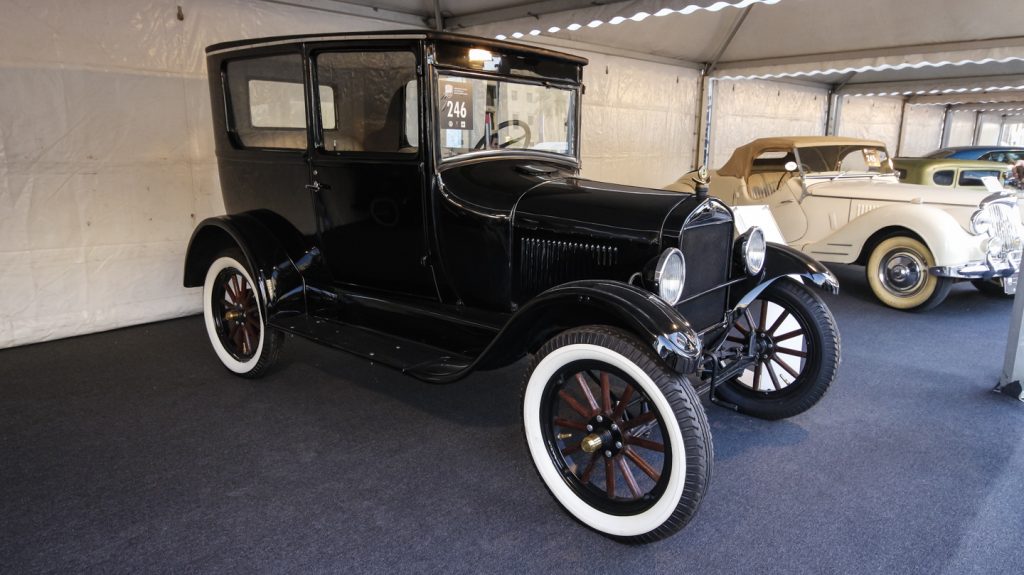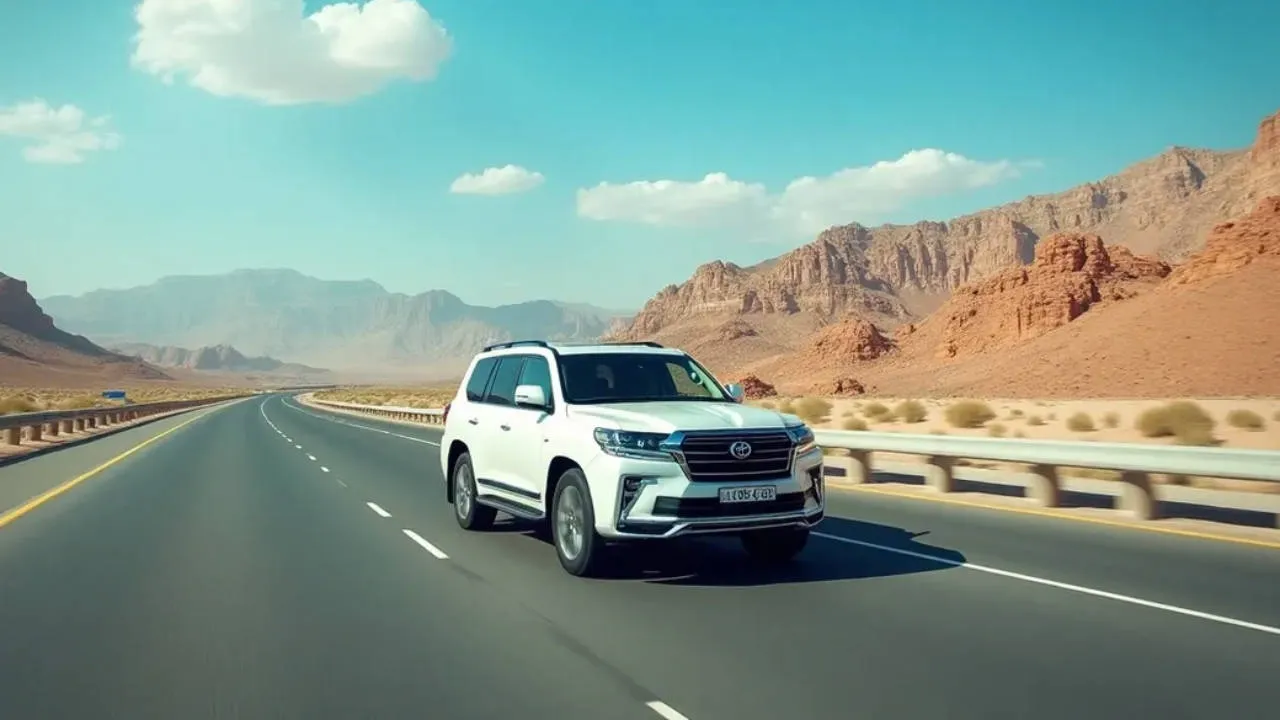How to register a classic car in the UAE

Classic cars are a wonderful sight. A throwback to where some of the most iconic models started off and it gives those of a certain age a glimpse of what cars used to look like. They also provide some with nostalgia and there’s nothing quite like spotting a classic car in the UAE.
In the UAE, classic cars do pop up for sale occasionally and usually come with demanding price tags and there is a market for these incredible machines. Note that modern classics don’t count.
There are also special number plates exclusively available for such cars and we’ve got a guide to help you get a classic car number plate in the UAE.
How to register a classic car in Dubai
To get a classic car license in the UAE, the vehicle must be 30 years or older (as of writing, 1989 model or later) and meet all safety criteria, as set by the Automobile Touring Club UAE (ATC) and the Roads and Transport Authority (RTA).
Two tests will be conducted on the vehicle. The first test looks at the visual aspects of the car, while the second test determines the safety of the car and is environmental effects it produces. Once the tests have concluded, the vehicle will be categorised into one of six categories of classic cars;
Category A – These vehicles can be driven across the UAE for a maximum of 10,000 kilometres per year. Cars built from 1950 and onwards fit into this category.
Category B – These cars can be driven on all UAE roads for a maximum of 5,000 kilometres per year. Vehicles built before 1950 fit into this category.
Category C – These motor vehicles can’t be driven on the streets of Dubai due to speed limitations. This is due to select roads in Dubai having minimum speed limitations of 60 km/h.
Category D – These cars can’t be driven during the evening due to their equipment (headlights specifically) aren’t sufficient for driving around in low lit areas. Day time driving is fine.
Category E – These vehicles can only be used on internal and service roads.
Category F – These vehicles can only be used for display purposes.
Here are the most common reasons as to why a certain vehicle fits into a certain category:
- Headlights are not bright enough.
- Lack of or no seatbelts.
- Rod, cable or link brakes.
- Wooden wheels.
To get a classic car registered in the UAE will cost AED 850; AED 420 for vehicle inspection and AED 430 for registration. Classic cars can be registered in Al Quasis Industrial Area 3.
Once registration is complete, a brown number plate will be issued with a number in English. Special
How to register a classic car in Abu Dhabi
As of the 1st of October 2018, registering a classic car in Abu Dhabi is now separated into just two categories.
The first is one-year registration for vehicles that can be driven on all roads. Registration costs AED 400 and renewal costs AED 350, 13-month insurance is mandatory after passing the technical tests.
The second category covers classic cars that are not fit for road use and can only be displayed at car exhibitions. Registration for vehicles that fall under this category must have an insurance policy, and go through technical tests. A three-year registration fee must be paid (AED 1,100) and renewal fees are AED 1,050.
Classic cars for sale in Dubai categorised in the second tier are strictly prohibited from using public roads and can only be moved via recovery truck or a trailer.
What documents do you need to register a classic?
No matter the Emirate, documents needed are identical and are as follows;
- Previous registration (if it has been registered before)
- Original invoices from the manufacturer of the vehicle
- Vehicle Customs Certificate
- Insurance documents
- All historical documents
- Valid Emirates ID and/or Passport (originals, copies are accepted but originals are preferred)
- Valid UAE driving license (original)
What are classic cars UAE tested for in the UAE?
When it comes to testing a classic car, the inspectors go through the following as per the ATCUAE;
- Body panels, subframe and chassis: All are examined for rust or cracks.
- Brake efficiency: An electronic brake tester is used to test the efficiency of the brake system.
- Brake system: All braking components are visually examined including the hydraulic brake cylinders, brake pins and rods, power brake system, brake levers, hand brake and all associated components.
- Door and locks: All doors and locks of the vehicle are checked. The bonnet is also checked.
- Emission test: Conducted electronically to test the vehicle’s emissions.
- Engine compartments and driveline: Inspected for any leaks, excessive smoke or noise.
- Engine control: Visual check of the engine controls.
- Exhaust system: General condition is checked. Mountings are also examined.
- Fuel system: Inspected for leakages and overall condition.
- Interior: Controls are visually examined and tested.
- Lighting system: Any light on the vehicle are inspected to ensure they are working.
- Rear and side mirrors: All examined.
- Seats: However many of them there are, all will be inspected for their overall condition. Buckles, seat belts and other components relating to the seats will also be checked.
- Steering system: Examined to ensure it’s safe to use on public roads.
- Suspension: Examined fully both visually and physically. The leaf and coil springs are checked for their condition. Air and hydraulic suspension components are tested for any leaks, corrosion or any other damage.
- Transmission controls: Checked visually and manually for both automatic and manual transmissions. Clutch is checked as well.
- Tyres: Checked visually for wear and tear, cracks and their road worthiness.
- Vehicle modification: Any modifications will be noted down and deemed appropriate or inappropriate.
- Vehicle identification number (VIN): Documented chassis number which is found on the engine of the car’s frame. Inspectors will verify its authenticity and belongs to the vehicle being inspected.
- Wheels: All of them will be thoroughly looked over to determine their condition. All metal rims are checked for rust and any other damage, while wooden wheels are examined for splitting and insect damage.
- Windscreen and side windows: All will be inspected along with their opening mechanisms.
What are the benefits of registering a car as a classic in the UAE?
Getting a classic number plate isn’t mandatory for classic cars as a number of them have been spotted with the standard white background plates. There are a few benefits for having a brown plate;
- Dubai registration.
- Emirates Classic Car Club Membership.
- Discounted recovery rates.
- Personal service.
And of course, they stand out from the rest as they are a different colour.
Can you register a right-hand drive classic in the UAE?
Yes! While uncommon, right-hand drive vehicles that are 30 years old or older can be registered as a classic and driven on UAE roads. This may be the only way you’re getting your hands on a JDM legend like a Skyline R33 or a Supra. As an example, this 1985 Land Cruiser can be registered and driven here.
Now that has all been sorted, it’s time to buy a classic! Dubicars.com has over 12,000 vehicles to choose from and there are classic cars for sale in Dubai, Sharjah, Abu Dhabi and Ajman.








